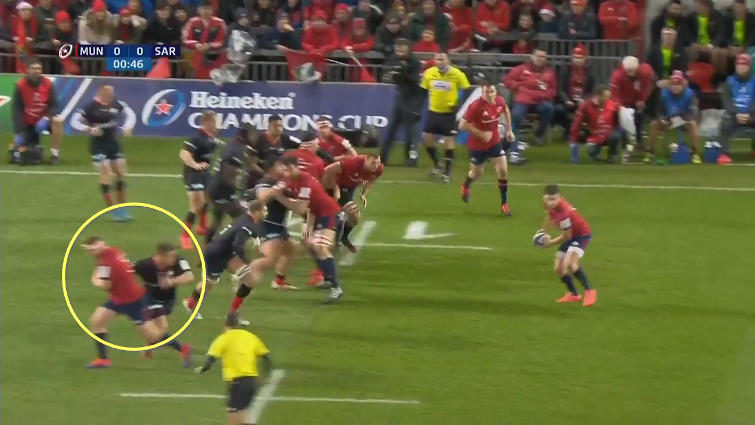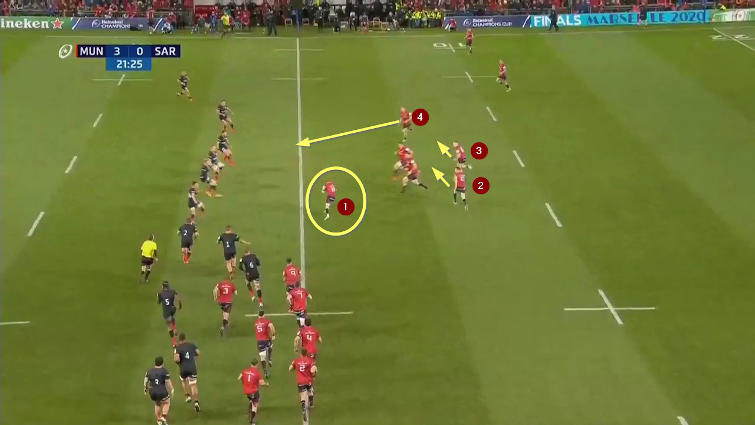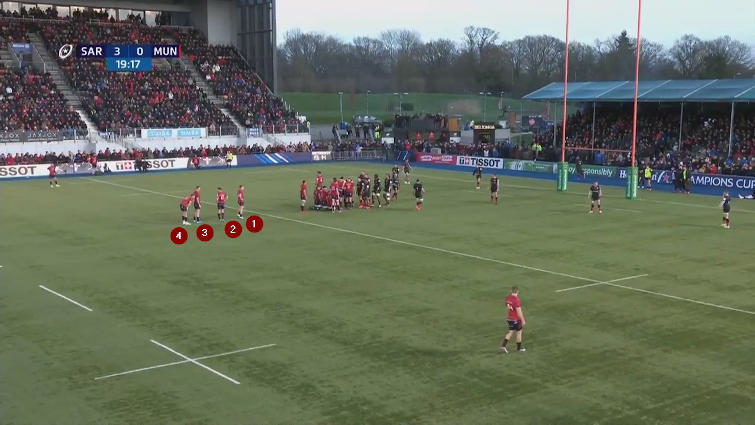It is probably best to leave sleeping dogs lie. Particularly when they happen to have been a key part of one of the most successful Australian rugby teams in history, and enjoy the distinction of having earned over 100 Wallaby caps.
None of this weighed in the balance when Stephen Larkham was sacked as assistant to Wallabies coach Michael Cheika back in February.
During the previous season, Australia had won only four of their 13 matches, their worst result in 60 years, and Larkham was the scapegoat.
It didn’t seem to matter that Larkham’s offence had performed rather better than Nathan Grey’s defence. The attack had scored 30 tries at an average rate of 2.3 per game in 2018. The defence, run by Cheika’s old cohort from the Waratahs, had conceded 35 tries at an average of three per fixture.
Grey’s record against Australia’s rivals from across the Tasman was even more dismal, shipping 17 tries in three matches against the All Blacks.
Despite the evidence, Grey remained and Larkham was forced to leave.
Where did the problem really lie? In 2019, with Rebels coach Shaun Berne as Larkham’s emergency replacement, Australia slipped further, managing a mere 13 tries from their six games against top-ten opposition.
Cheika cited philosophical differences but chose not to go into further detail. This was one point upon which the two coaches could agree.
“Ultimately Michael is responsible for the performance of the team,” Larkham commented pointedly in his resignation statement.
“We have differences in attacking strategy and overall game philosophy. We couldn’t agree on these key points and it is in the best interest of the team that they receive clear and consistent messages from their coaches.”
It did not take long for Larkham to get back on the horse, having been appointed as senior coach at Munster by Johann van Graan within four short months.

Stephen Larkham on matchday with Munster. (Photo by Dan Mullan/Getty Images)
Larkham is seen as the man who can revive the former glories of the Irish province. Munster have developed a nasty habit of failing at the semi-finals of major competitions in recent seasons, and Larkham is there to expand the quality of their attacking game.
Munster have always been able to kick, chase, maul and compete at the breakdown with the best of them. The main areas of need have been attacking detail in the backline, and up-skilling in the forwards.
“I’m coming in here to make a change, there’s no doubt about that,” Larkham told the Irish Examiner.
“In the interview process I identified a couple of areas where I felt the detail was lacking, in particular the use of skills with our forwards. I really do want to make sure that from 1 to 15 across the park, or from 1 to 23, everybody who takes the field has the ability to make decisions and take the right decisions.
“We probably didn’t create enough line-breaks or beat enough players one-on-one, so we’re looking at a bit of that detail at the moment.”
Larkham is following a well-worn path trodden by two other Brumbies coaches, Laurie Fisher and Tony McGahan, who coached at the province together between 2008 and 2011.
The challenge for the former flyhalf is twofold: to immerse himself in one of the most vibrant and intense rugby environments in the world off the field, and to find ways to combat some of the very best defensive structures on it.
“The program’s a much better program than any I’ve ever been a part of before. With the history behind the club and the squad that Johann has amassed and the squad that we’re going to have over the coming years, it was a no-brainer,” he told the Irish Timesd.
“I think the talent and skill level over here is better than it is in Australia. I’m not saying Irish players, I’m saying Munster players. Their ability to learn things is definitely better than some Australian players.”
If he can succeed on both counts, he will return to his native land as a valuable and marketable coaching asset. Top coaches who have a foot in both hemispheres are in high demand.
Larkham confronted one those top defensive structures in Munster’s recent European Champions Cup double-header against Saracens.
Although both games were low-scoring affairs (Munster won 10-3 in Limerick but lost the return match 15-6 in London), they offered some valuable hints about Larkham’s potential as a future head coach of the Wallabies.
As a player with both the Brumbies and Australia, Larkham was at the hub the most sophisticated and detailed attacking patterns of the era. That desire for detail in every aspect of attack has clearly filtered down into his coaching.

Larkham back in his playing glory days. (Photo by Ross Setford/Getty Images)
As an outside-half, one of Larkham’s favourite options was the in-pass from 10 to the blindside wing off an attacking lineout.
To make this play work, it is usually necessary to get some (legal) interference on the ‘tail gunner’ flowing out towards the ball from the set-piece:

At this first attacking lineout of the game, Munster tighthead Stephen Archer is clearly flagging his intention to make life difficult for the Saracens’ tail-gunner, Jack Singleton, by hooking his arm.
The result became concrete at another attacking set-piece six minutes later:
Archer blocks Singleton, and he is a step late getting to the in-pass from JJ Hanrahan to blindside winger Andrew Conway. There was a definite opportunity for Conway to get the ball away in the tackle to Munster number 13 Chris Farrell and continue the move with added impetus.
Another of Larkham’s ideas was to use a cut-out pass off a flat alignment to beat Saracens’ last defender on the edge of the line. This was a consistent theme over the two matches:
The attacking alignment is steeply angled onto the key passer, then it flattens out dramatically in order to beat the last defender with a long skip pass. The Munster attack used the same method to create the only try of the game later in the half:
As soon as the edge defender (in this case, number 9 Ben Spencer) comes up on the man opposite, he is beaten by a cut-out delivery to the touchline.
Munster have always been well-known for their desire to grind away with forward carries in the opposition 22, but Larkham’s addition to the coaching staff is beginning to change that attitude too:
The massive, flat, cut-out pass from midfield almost allows Conway to sneak in at the corner before he’s denied, at last gasp, by scramble defence.
Larkham’s use of his Ireland international left winger, Keith Earls, also illustrates an original and innovative attacking mind. He has clearly spotted something in Earls of which his previous coaches were oblivious.
In this example, Earls appears at first receiver off the lineout, with an assortment of options arrayed outside him:

There are two forwards available short, while Chris Farrell offers himself on the angled ball off a longer pass outside them. Munster numbers 10 and 12, meanwhile, head for the outside half of the pitch if the ball is played behind the forwards and Farrell.
In the event, Farrell would have been through the gap had he held onto Earls’ pass, but Munster ‘scored’ anyway after a fortuitous bounce. The try was disallowed on review for a rather dubious touch forward by the Munster number 13.
In the second game, Larkham had Earls line up at the back of left-hand lineout before becoming the ball-carrier at the back of the drive.
CJ Stander offers a decoy run to the openside before Earls splits blind – a nice idea which probably deserved a better fate.
Larkham also pinched an idea off American football for scrum time in the return game in London:

This is what is known as a ‘stack’ in the NFL, where all the possible receivers line up behind one another to one side of the line in order to mask their intentions and confuse the backfield coverage.
In this instance, all four of Munster’s inside backs can go either right or left, and that presents the defence with serious organisational issues with its back to the goal-line.
Summary
In 2019 it became clear Larkham was not at the root of the Wallabies’ problems, despite his scapegoating the year before. Even in the terrible 2018, his attack performed marginally better than the offence in the World Cup year – and it was definitely more effective than Nathan Grey’s defence, even though Grey kept his job for the 2019 campaign.
It would appear Michael Cheika’s Wallaby environment had a more negative impact on Larkham than the other way around, and that truth has only become more evident since his move to Ireland.
Since he has been with Munster, there have already been some encouraging green shoots of growth in Larkham’s coaching. He is identifying areas of weakness in the defence, and finding the detail and upskilling his charges in order to be able to exploit them.
Above all, he is innovating again, just as he did as a player under Rod Macqueen. That particular Stephen Larkham had largely disappeared in the acrimony of the Cheika era.
One day he will return to Australia, and who is to say that he will not turn out to be the same coaching mastermind he proved to be as a player? It is as good a Christmas wish as any for Wallaby supporters, whatever their hue.

































































































